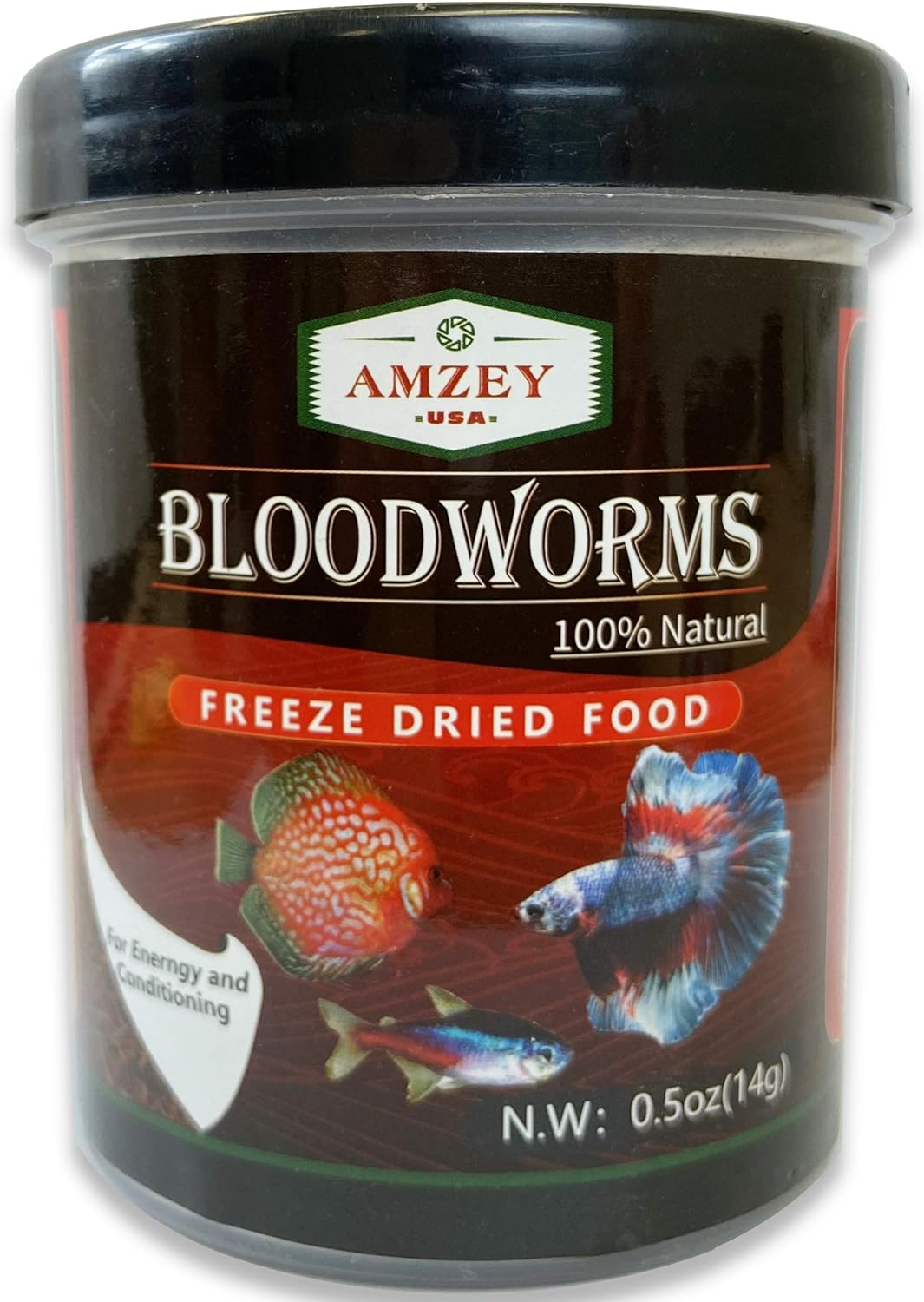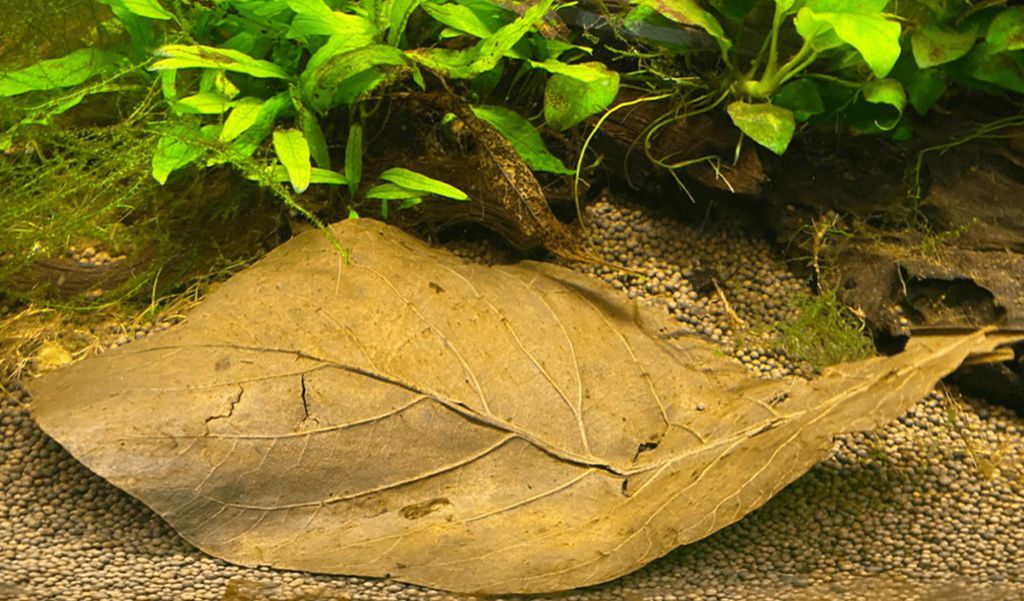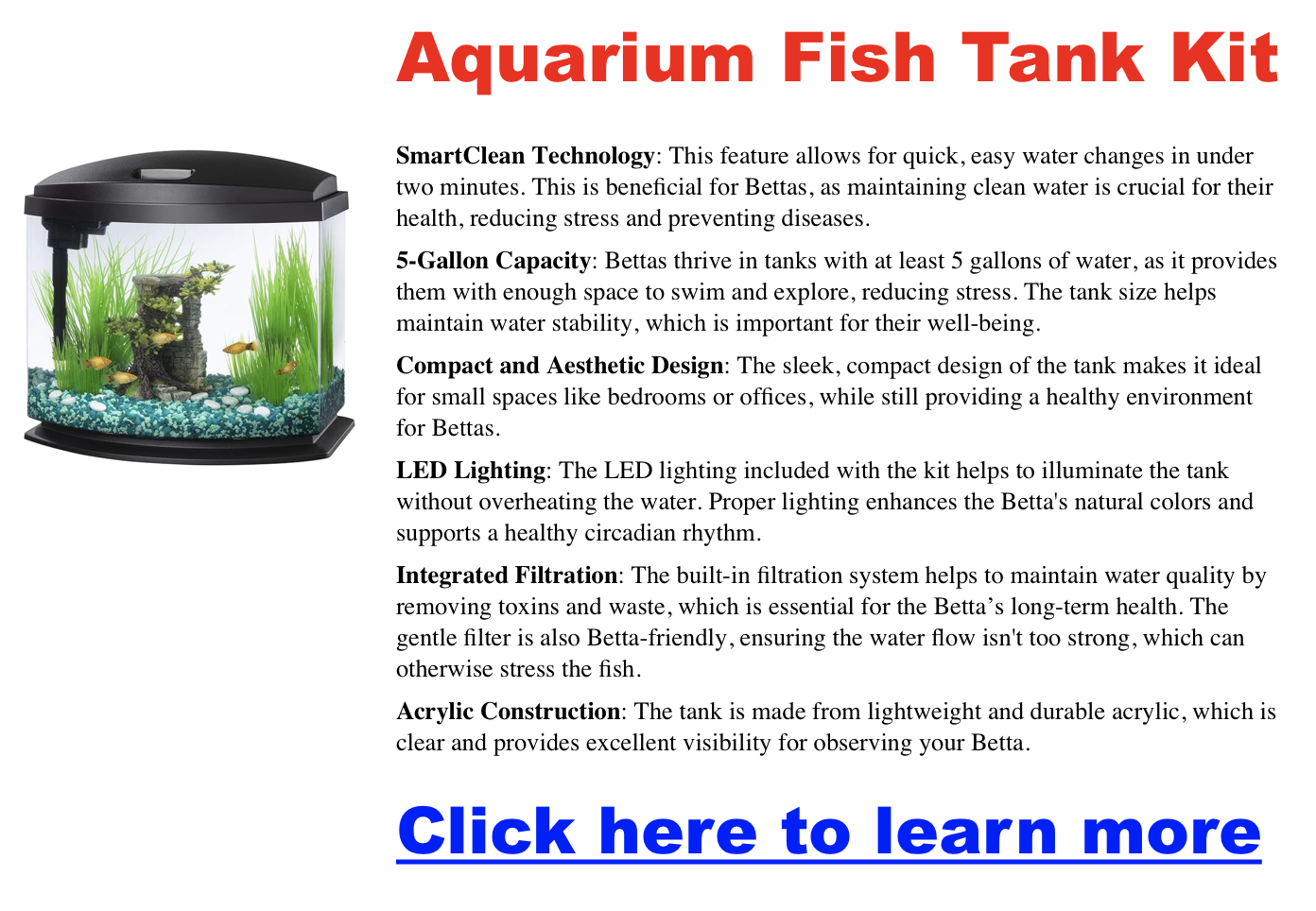Matt
What do betta fish eat in the wild?

Credit: Betaboxx
What Do Betta Fish Eat In The Wild?
In their natural habitat, betta fish are carnivorous and rely on a diet of:
- Insect Larvae: Bettas eat mosquito larvae and those of other insects are vital to their diet. Bettas often lurk near the surface, ready to snatch up these wriggling meals.
- Small Insects: Adult insects that land or fall into the water are a quick snack! Bettas are excellent at spotting movement and will strike with surprising speed.
- Worms: Bloodworms, blackworms, and other small aquatic worms provide bettas with protein and other essential nutrients.
- Tiny Crustaceans: Bettas eagerly consume water fleas (Daphnia), brine shrimp, and similar creatures. These are especially important food sources for young betta fry.
- Surface Specialists: Bettas have upturned mouths designed for scooping food from the water’s surface, making them ideally suited for their environment.
Best Betta Food – What They Can Eat At Home
In captivity, betta fish need a balanced diet to stay healthy and mimic what they would naturally eat in the wild. Click here to learn more about betta fish food. Common options include:
- Betta Pellets: Specially formulated for bettas, these provide essential nutrients.
- Freeze-dried or Frozen Foods: Bloodworms, brine shrimp, and daphnia are great protein-rich treats.
- Live Foods: Live brine shrimp or mosquito larvae can be offered occasionally to replicate a wild diet.
- Vegetables (Occasional): Soft, boiled vegetables like peas can help with digestion, though they shouldn’t form a large part of the diet.
The Staple: Prepared Betta Foods
Click here for my favorite food to feed bettas
- Betta Pellets: These are the nutritional workhorses for your betta. They’re designed to meet a betta’s dietary needs, packing essential vitamins and protein. Floating pellets are best, allowing easy feeding and less water mess. High-quality brands like Hikari, Ocean Nutrition, NorthFin, and New Life Spectrum are excellent choices.
- High-Quality Betta Pellets: Select pellets designed specifically for bettas. Prioritize those listing fish meal, shrimp meal, or other animal-based proteins as the main ingredients. Smaller pellets (1-3mm) that float best match a betta’s natural feeding behavior.
- Flakes: While betta-specific flakes exist, many bettas find them less appealing than pellets. Flakes also break down faster in the water, causing more pollution. You can certainly try betta flakes, but they shouldn’t be your pet’s exclusive diet.
Tasty Treats: Freeze-Dried, Frozen, and Live Foods
- Freeze-Dried Delights: Supplement with treats of live or frozen bloodworms, brine shrimp, or daphnia. Freeze-dried foods, such as bloodworms, offer a less processed whole-food option that is often free from parasites and bacteria.
- These provide a more stimulating feeding experience, additional nutrients, and will even tempt a finicky betta’s appetite.
- Frozen Favorites: Frozen bloodworms, brine shrimp, and daphnia mimic what bettas would enjoy in their natural habitat and provide a flavor boost.
- The Natural Choice: Live Foods: Live options like baby brine shrimp and shrimp coals are the closest to a betta’s wild diet and offer excellent mental stimulation. However, they can be more challenging to source and might carry disease risks.
How Often to Feed Betta Fish
- Small Portions, Big Impact: Bettas should eat twice a day. They have tiny stomachs. Feed them only what they can eat in about 2 minutes. Overfeeding is extremely harmful and leads to health problems and a polluted tank.
- Cleanliness is Key: Uneaten food fouls the water. Promptly remove it after feeding.
- Fasting is Natural: An occasional fast day (skipping a meal) mimics their wild experience where food isn’t always plentiful and can benefit their health.
- Frequency: Feed adult bettas twice a day with the portions mentioned above. Fry requires multiple small meals throughout the day as they are constantly growing.
How Many Pellets to Feed Betta
- The “Eyeball Rule”: At each meal, feed your betta roughly the same volume of pellets as the size of their eyeball. This can be 2-4 pellets depending on the brand.
- Feeding Frequency: Feed this amount twice a day for most adult bettas.
- Body Shape: A healthy betta will have a slightly rounded belly after eating. If the betta is constantly bloated, reduce the food amount.
- Behavior: Bettas are notorious for begging for more food even when full. Don’t get tricked! Be consistent with portions.
Variety is Key
Just like us, bettas enjoy a diverse diet. Mixing high-quality pellets with occasional freeze-dried, frozen, or live treats provides the best nutritional balance and keeps feeding time exciting.
My Betta Isn’t Eating
If your betta isn’t eating, click here for a guide on how to deal with their appetite. If your betta is suffering from something else, such as loss of color, bloating, lethargy, etc you can look at our disease page to help diagnose the issue.
Feeding Betta Fry: Special Considerations
Baby bettas have even more specialized dietary needs:
- The First Days: Fry initially feed off their yolk sacs. Once mobile, they need minuscule live foods like infusoria and baby brine shrimp.
- Growing Up: Small worms (chopped if needed) and larger larvae can be added as they grow.
- Adult Transition: Betta fry can gradually start eating adult food once they reach roughly an inch long
Quality and Variety: The Keys to Success
The best diets incorporate both premium betta pellets and a rotating selection of live or frozen foods. Prioritize high-quality foods and always check the ingredients list. Avoid cheap brands, as these often contain unhealthy fillers and additives. Trusted brands like Hikari and Ocean Nutrition offer excellent betta-specific formulas.
Guide to Importing Betta Fish from Asia
Importing Betta fish can unlock a world of vibrant colors, unique patterns, and rare varieties unavailable in your local pet stores. However, it’s a more complex and expensive process than buying locally. This guide aims to demystify the process and help you decide if importing is right for you.
Step 1: Finding a Reputable Breeder
Before Spending a Lot of Money on a Betta… Click Here For My Favorite Care Guide Book
- Online Resources: Begin your search on Betta-focused forums, social media groups, and breeder directories. Look for breeders with excellent reputations and a focus on healthy, high-quality fish.
- Communication: Contact potential breeders and inquire about their export experience, available Betta types, health guarantees, and shipping processes.
- Ethical Considerations: Where possible, prioritize breeders with a demonstrable commitment to ethical breeding practices and the well-being of their fish.
Step 2: Choosing a Transhipper
- The Importance of Transhippers: Transhippers are specialized companies that handle the logistics and paperwork of importing live animals. They’ll receive your fish, take care of customs clearance, and arrange the final leg of shipping to your address.
- Finding the Right Transhipper: Ask your breeder for recommendations or search online for transhippers experienced in handling Betta imports to your region. Contact several for quotes and compare services.
Step 3: Understanding the Costs
Importing Bettas is significantly more expensive than buying locally. Here’s a breakdown of typical expenses:
- Betta Fish: The price will depend on the species, rarity, and quality.
- Export Fees: Charged by the breeder’s country.
- Transhipper Fees: Handling, paperwork, and re-shipping costs.
- Airfreight: The cost of shipping the fish internationally.
- Import Permits and Taxes: Fees imposed by your country.
- Quarantine (if required): Potential costs of setting up a quarantine tank and any required treatments.
Step 4: The Import Process
- Coordination: Work with your breeder and transhipper to determine timelines, shipping logistics, and payment arrangements.
- Regulations: Meticulously research import regulations in your country. Contact relevant government agencies for permits, health certificates, and declarations.
- Purchase and Shipping: The breeder will prepare the fish in specialized bags for long-haul transport. The transhipper will organize safe and timely transportation.
- Arrival: Be prepared to collect the fish from the transhipper or arrange for final delivery. Follow any quarantine instructions provided.
Why Consider Importing Bettas?
- Benefits: Access to rare varieties, specialized breeders, potentially higher quality stock, and the excitement of finding unique fish.
- Drawbacks: High costs, potential for shipping stress in fish, complex regulations, and possible ethical concerns.
Death on Arrival (DOA) Policies
- Standard Practice: Most reputable breeders and transhippers offer DOA protection.
- Requirements: Usually involve providing photo/video proof within a set timeframe after arrival.
- Compensation: Varies from full refunds, partial refunds, or replacement fish.
Final Thoughts
Importing Bettas is a rewarding but demanding undertaking. It’s best suited to experienced aquarists seeking specific Betta traits who are prepared for the costs, logistics, and potential risks involved. If you’re a beginner or looking for a simpler option, consider exploring local breeders or reputable online Betta sellers first.
How Long do Catappa/Indian Almond Leaves last in Your Aquarium?
Catappa, also known as Indian Almond Leaves, has gained popularity among aquarium enthusiasts for their remarkable benefits such as lowering pH. These leaves, derived from the Terminalia catappa tree, are not just admired for their aesthetic appeal, but also for the multitude of advantages they offer to the aquatic environment. This article delves into the heart of a commonly asked question: how long do these leaves last in your aquarium? Generally, it lasts one or two months, but this article will also explore various aspects of Catappa leaves usage, their benefits, and factors affecting their longevity.
Methods of Using Catappa Leaves
There are two primary ways to utilize Catappa leaves in your aquarium. The most straightforward method is directly placing the leaves into the tank. This approach allows the leaves to slowly release tannins, beneficial chemicals that replicate the natural habitat of many fish species. Another method involves creating a concentrated extract from the leaves, which can be added to the water to achieve similar effects without the leaves physically being present. Both methods have unique benefits, depending on the desired outcome and the aesthetics of the tank.
Why Use Indian Almond Leaves?
Click Here to learn how to reduce water changes by 70-80% by growing a specific plant…
The allure of Catappa leaves stems from the tannins and other beneficial chemicals they release. These substances not only lower the pH of the water (keeping it between 6.8-7.5 is ideal), making it more akin to the natural environments of certain fish species, but also possess antifungal and antibacterial properties, enhancing the overall health of the aquarium. Additionally, the naturalistic appearance and the decomposing leaves provide extra food sources for fish and shrimp, creating a dynamic ecosystem within the tank.
What Fish Benefit from Catappa Leaves?
Catappa leaves are particularly beneficial for a variety of fish species. Notably, betta fish, angelfish, corydoras, Apistogramma, and various shrimp species thrive in environments enriched with these leaves. The tannins released by the leaves mimic the conditions of their natural habitats, promoting health and vitality among these aquatic creatures.
Why Leave Catappa Leaves in Your Tank?
After the initial release of tannins, you might wonder whether to remove the leaves from the tank. However, there are compelling reasons to leave them in. Decomposing Catappa leaves continue to serve as a micro-habitat, offering shelter, breeding grounds, and a source of food. This contributes to creating a balanced and natural ecosystem within the aquarium.

Fish that Eat Catappa Leaves
Beyond providing environmental benefits, Catappa leaves also offer nutritional value. Plant-eating fish and shrimp find these leaves, especially as they decay, a good source of nutrients and fibers. Moreover, the leaves attract algae and microorganisms, offering a banquet for the aquarium’s inhabitants and contributing to a healthy, balanced diet.
The Quality of Your Catappa Leaves
Not all Catappa leaves are created equal. The quality of the leaves can significantly impact the water quality, their durability, and the overall benefits they provide. High-quality leaves tend to last longer and release more beneficial substances, making it crucial to source your leaves from reputable suppliers.
Products You Need for Wild Bettas
For those passionate about keeping wild bettas, incorporating Indian almond leaves into your aquarium is just the beginning. To support the health and well-beingwell-being of these magnificent fish, consider incorporating quality betta food, a sponge filter, and live floating plants and ensuring they have a spacious 5-gallon tank at minimum. These elements, combined with the natural benefits of Catappa leaves, create an ideal habitat for wild bettas to thrive.
The longevity of Catappa (Indian Almond) leaves in an aquarium is influenced by several factors, including the leaf’s size, the tank conditions, and how the leaf is prepared before being introduced to the aquarium. Generally, a Catappa leaf lasts 2 to 4 weeks before fully decomposing. However, this duration can vary. Larger leaves, for instance, may persist longer due to their size and thickness, while leaves in tanks with higher flow or more active inhabitants may break down more quickly.
Extending the Life of Catappa Leaves
While the natural decomposition of Catappa leaves is beneficial for the aquarium, providing continuous release of tannins and creating a natural environment, there are ways to extend their life slightly:
- Pre-soaking: Before adding the leaves to your tank, pre-soaking them in water for a few days can help remove some of the initial tannins and might slightly slow down the decomposition rate once they are in the aquarium. This can also reduce the initial impact on your water’s color and pH levels.
- Reducing Water Movement: In aquariums with strong water movement or filtration, leaves may break down faster due to the increased agitation. Reducing the flow near where the leaves are placed can help to extend their life.
- Leaf Placement: Positioning the leaves in areas of the tank where they are less disturbed by fish or water flow can also help to prolong their presence. Some aquarists place leaves in quieter sections of the tank or create designated areas where leaves can accumulate without being constantly moved or picked at by fish.
- Using Mesh Bags: Another method to extend the life of the leaves is to place them inside mesh bags. This can prevent the leaves from being broken apart by fish and allows for easy removal once fully decomposed. However, this might also limit fish and shrimp’s direct benefits from interacting with the leaves.
- Choosing High-Quality Leaves: Higher-quality leaves might release beneficial tannins more consistently and have longer structural integrity in the water. Opting for premium, organically sourced Catappa leaves can ensure you get the most out of their use in your aquarium.
- Partial Replacements: Instead of replacing all the leaves at once when they decompose, consider partially replacing them. This way, you maintain a consistent level of tannins in the water while extending the overall period of leaves in the tank.
While the natural breakdown of Catappa leaves is part of their appeal, understanding how to extend their useful life can help aquarists maximize their benefits. By adopting methods such as pre-soaking, adjusting water flow, and careful placement, the leaves can offer a prolonged source of tannins, shelter, and food for the inhabitants of your aquarium.
How do Betta Fish Breathe?
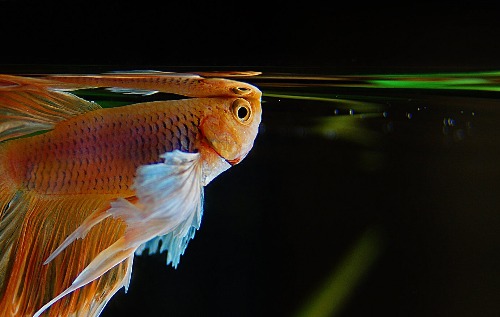

Photo credit: Dan the Hutt
Betta fish, the dazzling jewels of the aquarium world, are fascinating for reasons beyond their vibrant colors and flowing fins. Unlike most fish, bettas possess a remarkable ability: they can breathe air directly from the surface. This unique feature influences everything from their behavior to how we should care for them.
The Secret to How Betta Fish Breathe: The Labyrinth Organ
Click here for the best way to aerate your tank
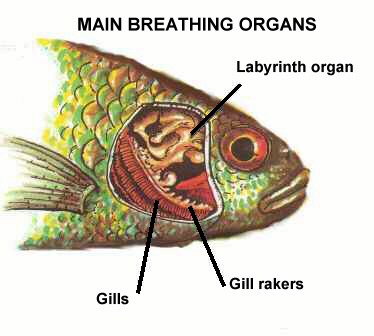

credit: Spread the betta love
The key to a betta’s air-breathing lies in the labyrinth organ, which is located above their gills. Imagine a miniature maze with thin, delicate tissues packed with blood vessels. When a betta breaks the surface, it gulps in the air, and these tissues extract oxygen like our lungs do! It’s an incredible adaptation that allows them to survive in environments other fish might find impossible.
An Evolutionary Advantage
Betta fish hail from Southeast Asia, inhabiting rice paddies, ditches, and shallow ponds. During dry seasons, these habitats can become hot, stagnant, and low in oxygen. The labyrinth organ gives bettas a lifeline, helping them thrive where other fish struggle. This same resilience is why bettas may tolerate less-than-ideal conditions in home aquariums, but it shouldn’t be an excuse for poor care.
Betta Bubble Nests: More Than Just Cute
Did you know those intricate floating bubble nests male bettas build have a vital purpose? These aren’t simply decorative – they’re cradles for their young! Male bettas blow saliva-coated air bubbles that form a sturdy raft at the surface. This ensures that the eggs and newly hatched fry always have access to air for breathing until they develop their labyrinth organs. It just goes to show how intertwined air-breathing is with the betta’s entire lifecycle.
Betta Care: Oxygen Myths and Must-Haves
Their air-gulping behavior sometimes leads to the misconception that bettas don’t need oxygen in their water. This is false! They still use their gills and require good water quality. Proper filtration for waste removal is essential. Avoid tall, narrow tanks with limited surface area for breathing. Wider, shallower tanks promote their natural behavior and health.
Catappa or Indian almond leaves for Betta Fish
The use of catappa leaves has a rich history. Indigenous communities in Southeast Asia have long valued them for their medicinal properties. Betta fish breeders and enthusiasts later recognized their potential. They discovered that catappa leaves or Indian almond leaves not only promote healing but also condition fish for competition and enhance their natural water conditions. They are a nature-sourced secret weapon for boosting your betta’s health, happiness, and longevity.
What are Indian Almond Leaves / Catappa Leaves?
These leaves come from the majestic Terminalia catappa tree, a tropical tree found in regions where betta fish naturally live. The leaves are large, with a leathery texture and a brownish hue when dried. In the aquarium world, they’re primarily sold in dried form and ready to use.
Why Are Indian Almond Leaves Beneficial?
Catappa leaves are packed with benefits for your betta fish. Here’s a breakdown:
- Health Powerhouse: These leaves are a natural medicine cabinet for your betta! They contain antibacterial and antifungal agents that fight harmful pathogens, helping prevent issues like fin rot, skin infections, and other ailments. Additionally, they strengthen immune function, making your betta less susceptible to disease. Learn more about betta diseases here.
- Stress Buster: Aquarium life can be different from a betta’s wild environment. Catappa leaves release tannins into the water, creating a slightly tinted, acidic environment that closely resembles their natural habitat. This significantly reduces stress, making your betta calmer, more vibrant, and likely to exhibit natural behaviors.
- Water Chemistry Master: Bettas prefer a slightly acidic and softer water environment. Conveniently, catappa leaves gently lower the pH and soften the water, creating conditions that contribute to your betta’s overall well-being.
- Cozy Hideaway: The leaves offer perfect hiding spots and places to rest. This sense of security is essential in reducing stress levels and allowing your betta to display its full personality.
How to Use Indian Almond Leaves
Click here for my favorite leaves for a betta tank
Using catappa leaves is simple:
- Preparation: Rinse the leaves thoroughly to remove dust and debris. Soak them in clean, dechlorinated water for a few hours or overnight. This softens them and reduces the initial release of tannins.
- Dosage: Start with one medium-sized leaf per 5-10 gallons of water. Observe your betta’s behavior and the water tint – you can adjust the dosage for a stronger or milder effect.
- Forms: Use whole leaves for a gradual tannin release, tear them into smaller pieces for a faster effect, or opt for convenient pre-made catappa leaf extracts.
- Replacement: As the leaves disintegrate, usually within a few weeks, replace them to maintain the benefits.
Alternatives
These alternatives can also be used, either in conjunction with or independently of catappa leaves:
- Alder Cones: Lower pH, release tannins and provide a different aesthetic.
- Banana Leaves: Offer antibacterial properties and hiding places when dried.
- Oak Leaves: Lower pH and offer shelter, though less commonly used in aquariums.
Where to Buy Indian Almond Leaves
Click here for my favorite leaves for a betta tank
Source your catappa leaves from reputable aquarium suppliers – online or in-store. Look for quality leaves free from pesticides.
FAQs
- Will catappa leaves stain my tank? They’ll add a slight brown tint, which is harmless and beneficial but may be an aesthetic consideration for some.
- How long do catappa leaves last? They’ll last several weeks before needing replacement.
- Can I use too many catappa leaves? Overdosing could drastically lower pH. Start with recommended amounts and monitor your water parameters.
Final Thoughts
Give your betta the gift of a more natural and fulfilling life with catappa leaves! See the difference in their health, vibrancy, and behavior. Your betta will thank you for it!
Betta species listed by complex
Betta splendens (Siamese fighting fish) | Full Care Guide


Photo credit: Franks bettas
Betta splendens, also known as Siamese fighting fish, are a dazzling addition to any aquarium. Their vibrant colors, flowing fins, and aggressive personalities have captivated fish enthusiasts for centuries. Native to the shallow waters of Southeast Asia, these fish require specific care to thrive in captivity. This guide will delve into everything you need to know to give your betta the best life possible.
| Scientific Name | Betta splendens |
| Common Name | Siamese Fighting Fish |
| Background | – Etymology: “Betta” from “Ikan Bettah” (fighting fish) and “Splendens” means “shining” for their colors. Originally bred for their fighting abilities, now known for vibrant colors and fin shapes. Wild populations are endangered due to habitat destruction and pollution. |
| Natural Habitat | Shallow rice paddies, marshes, and slow-moving streams in Southeast Asia. Prefers warm water (76-81°F), slightly acidic pH (6.5-7.5), and low current environments. |
| Temperament | Territorial and aggressive, especially males. Males need solitary tanks. Female “sororities” possible with caution. Limited compatible tank mates. |
| Appearance | – Wild Bettas: Smaller, shorter fins, subdued colors. – Domestic Bettas: Wide color range, various fin shapes like crown tails, half-moons, and plakats. |
| Tank Setup | – Minimum 5 gallons, ideally 10+ for more space. – Smooth gravel or sand substrate. – Equipped with a heater, gentle flow filter, and thermometer. – Decorate with live or silk plants, betta logs, and smooth caves for enrichment and hiding spots. Avoid sharp objects. |
| Water Parameters | – Regular testing for pH 6.5-7.5, ammonia 0ppm, nitrite 0ppm, nitrate <40ppm. – Perform 25-50% weekly water changes using a water conditioner. |
| Compatible Tank Mates | Best kept alone. Potential for certain tetras or Corydoras catfish in large, well-maintained tanks with experienced care. |
| Feeding | Siamese fighting fish pellets, patties, or flakes as a base diet. – Supplement with frozen or freeze-dried bloodworms, brine shrimp, or daphnia. – Avoid overfeeding; small meals recommended. |
Some Background
- Etymology: “Betta” originates from the Southeast Asian “Ikan Bettah,” referring to a group of fighting fish. “Splendens” is Latin for “shining,” a nod to their brilliant colors.
- Domestication: Bettas were originally bred for their fighting prowess. Through selective breeding over centuries, they’ve developed the incredible range of colors and fin shapes we know today – a far cry from their more subdued wild relatives.
- Endangered Status: Wild Betta splendens populations are declining due to habitat destruction and pollution. Understanding their plight underscores the importance of responsible care for those in our aquariums.
Siamese Fighting Fish (Betta Splendens) Care
- Tank Setup
- Size Matters: While often sold in tiny containers, bettas thrive in larger setups. 5 gallons is the absolute minimum, with 10+ gallons being ideal.
- Substrate: Smooth gravel or sand prevents damage to delicate fins.
- Equipment: A heater (for stable temperatures), a filter (gentle flow), and a thermometer.
- Enrichment: Live or silk plants, betta logs, and smooth caves provide hiding spots, reducing stress and mimicking their natural environment. Avoid anything with sharp edges!
- Water Parameters
- Test Regularly: Invest in a water testing kit—aim for: pH 6.5-7.5, ammonia 0ppm, nitrite 0ppm, nitrate <40ppm.
- Water Changes: Partial water changes (25-50% weekly) are crucial to remove waste and maintain healthy conditions. Always use a water conditioner!
- Compatible Tank Mates
- Generally Solitary: Bettas do best alone.
- Limited Options: In large tanks, with experienced owners, some potential tank mates include certain tetras or bottom-dwellers like Corydoras catfish. Do extensive research first!
-
Siamese Fighting Fish Diet
- Quality: Choose betta-specific pellets or flakes as a base diet.
- Variety: Offer frozen or freeze-dried bloodworms, brine shrimp, or daphnia a few times a week.
- Don’t Overfeed: Bettas have small stomachs. Feed only what they eat in a couple of minutes. Overfeeding leads to health problems.
Betta Splendens Habitat
In the wild, Betta splendens inhabit shallow rice paddies, marshes, and slow-moving streams across Thailand and neighboring countries. These environments feature:
- Warmth: Bettas are tropical fish and need water temperatures between 75-80°F (24-27°C) to thrive. This warm temperature range is important for their metabolism, immune function, and breeding behavior.
- Shallow Water: Their preferred water depth is shallow, often only a few inches deep. This shallow water allows them to easily access the surface for air, as they breathe atmospheric air with their labrinth organ. In the wild, bettas are found in flooded rice paddies, stagnant ponds, and along the edges of slow-moving streams where shallow water is plentiful.
- Dense Vegetation: Betta fish love areas with lots of aquatic plants, which provide hiding spots, resources for nest building, and a plentiful supply of small insects for feeding. Plants with large leaves or floating plants are particularly beneficial, as they provide both shelter and a place for male bettas to build their bubble nests.
- Low Water Flow: Bettas prefer stagnant or slow-moving water, as their long fins make it difficult to swim in strong currents. Strong currents can stress out bettas and make them more susceptible to disease. In their natural habitat, bettas are found in areas with minimal water flow, such as rice paddies, stagnant ponds, and the edges of slow-moving streams.
Temperament
Betta splendens, particularly males, are known for their territorial and aggressive nature. They flare their gills and fins in dazzling displays to intimidate rivals. This behavior means several things for owners:
- Males Need Their Space: Male bettas should be kept alone to prevent fights.
- Females Can Be Tricky: Groups of females (“sororities”) are possible, but require heavily planted tanks, careful monitoring, and experienced aquarists.
- Tank Mates are Limited: If you have a large, established tank, see the Care section for a few potential options.
Appearance of Betta Splendens
Both wild and domestic betta splendens share a similar body shape featuring an upturned mouth and a labyrinth organ (which allows them to breathe air). But domestication has led to some striking differences:
- Wild Bettas are typically smaller, with shorter fins and more subdued colors (browns, greens) that help them blend in.
- Domestic Bettas Are a riot of colors—reds, blues, purples, and more! They also exhibit various fin shapes, such as crown tails, half-moons, and plakats (short fins).
Betta Smaragdina – Emerald Betta – Full Caresheet


Photo credit: Fishy hub
Betta smaragdina, also known as the Emerald Betta, is a stunning freshwater fish native to Southeast Asia. Unlike their popular cousins, the Siamese Fighting Fish (Betta splendens), Betta smaragdina are peaceful, making them ideal candidates for community aquariums. With their shimmering green and blue scales and gentle nature, they bring a captivating presence to any tank. This guide provides everything you need to know about Betta smaragdina care, from their origins to successful breeding.
| Common Name | Emerald Betta |
| Scientific Name | Betta smaragdina |
| Origin | Southeast Asia (Thailand, Laos, Cambodia, Vietnam) |
| Habitat | Slow-moving streams, marshes, rice paddies; soft, slightly acidic water |
| Appearance | Vibrant, iridescent green and blue scales; males are more colorful with possible extended fins; typically 1-1.5 inches in length |
| Behavior | Peaceful, suitable for community tanks; minor intraspecies aggression possible during breeding |
| Ideal Tankmates | Small, peaceful species like rasboras, tetras, corydoras catfish, shrimp |
| Tank Requirements | Minimum 10 gallons for a single fish, larger for groups; pH 6.0-7.5, hardness 5-15 dGH, temperature 70°F-80°F |
| Filtration | Gentle filter; sponge or low-flow hang-on-back |
| Diet | Varied diet of high-quality pellets, frozen and occasional live foods; small portions multiple times a day |
| Breeding Tank Setup | 5-10 gallon tank; very soft water (2-5 dGH), pH ~6.5, temperature 78-82°F; small sponge filter, dense floating plants, leaf litter |
| Conditioning Breeders | Separate male and female, feed protein-rich diet |
| Spawning Process | Introduce female in clear container; male builds bubble nest, courtship, spawning under nest, remove female post-spawning |
| Fry Care | Remove male after fry become free-swimming; feed infusoria, microworms, baby brine shrimp; monitor health, perform small, matched water changes |
Origins and Wild Habitat
Betta smaragdina hail from the tropical regions of Thailand, Laos, Cambodia, and Vietnam. They inhabit slow-moving streams, marshes, and rice paddies with dense vegetation. These waters are typically soft and slightly acidic. Interestingly, Betta smaragdina can hybridize with other closely related Betta species in the wild.
Appearance
Betta smaragdina exhibit a vibrant, iridescent green and blue coloration that gives them their “emerald” name. Males are more colorful than females, and they may develop extended fins. They are smaller than Betta splendens, generally reaching around 1-1.5 inches in length. Understanding their subtle differences from Betta mahachaiensis is important for accurate identification.
Behavior
Click here for my favorite Smaragdina food
While Betta splendens are known for their aggression, Betta smaragdina are remarkably peaceful. However, some minor aggression within their own species is possible, especially during breeding periods. They are generally hardy fish but monitor them carefully in a community setup. Here’s where community tank challenges come in:
- Ideal Tankmates: Opt for small, peaceful species like rasboras, tetras, corydoras catfish, and shrimp. Avoid boisterous or fin-nipping fish.
- Space and Hiding Places: A spacious tank with ample vegetation, caves, and driftwood is vital for minimizing potential squabbles and providing a sense of security.
- Tankmate Temperament: Finding the right balance with tankmates is key. Overly timid fish might be outcompeted for food, while overly aggressive species can stress your Betta smaragdina.
Care
Click here for my favorite water care tool I can’t live without
- Tank Size: 10 gallons is recommended for a single Betta smaragdina. For groups, scale up the tank size accordingly. Female bettas can coexist in groups of 4-6 in a larger tank with ample territory for each.
- Water Parameters: Maintain a pH between 6.0-7.5, water hardness of 5-15 dGH, and a temperature range of 70°F to 80°F.
- Filtration: Choose a gentle filter to avoid strong currents. Sponge filters or low-flow hang-on-back filters are excellent.
- Substrate and Décor: Use sand or soft aquarium soil. Include plenty of live or artificial plants, driftwood, and some leaf litter to mimic their natural environment.
- Diet: Offer a varied diet of high-quality betta pellets, frozen foods (bloodworms, brine shrimp, daphnia), and occasional live foods. Feed small portions several times a day.
Breeding Betta Smaragdina
Breeding Betta smaragdina is a rewarding experience, though it does require some preparation and careful observation. Here’s a detailed breakdown of the process:
Setting Up the Breeding Tank
- Tank Size: A 5-10 gallon tank is sufficient for breeding.
- Water Parameters: Aim for very soft water (2-5 dGH) and a slightly acidic pH (around 6.5). Use reverse osmosis or rainwater if your tap water is too hard. Maintain a temperature of 78-82°F.
- Filtration: A small sponge filter with minimal flow is ideal.
- Décor: Include dense floating plants like hornwort or water sprite for bubble nest building. Add leaf litter or Indian almond leaves to release tannins, simulating their natural habitat.
Conditioning the Breeders
- Separate the chosen male and female for a few weeks.
- Feed them a high-quality, protein-rich diet consisting of live foods like brine shrimp, or bloodworms, or daphnia. This will stimulate egg production in the female and nest-building behavior in the male.
Introducing the Pair
- Place the female in a clear container or breeding enclosure within the breeding tank. This allows them to see each other while protecting the female initially.
- Observe their behavior. The male will likely begin flaring and building his bubble nest. The female should exhibit vertical stripes and a swollen belly indicating her readiness.
- After a day or two, if both fish seem receptive, carefully release the female into the tank.
Courtship and Spawning
- The male will perform elaborate courtship displays, flaring his fins and chasing the female around the tank.
- Eventually, the pair will embrace under the bubble nest, releasing eggs and sperm. The male will collect the eggs and place them carefully within the nest.
- Once spawning is complete, remove the female back to her main tank to prevent aggression or egg-eating.
Caring for Fry
- The male will meticulously care for the eggs, ensuring they stay within the nest. The eggs usually hatch within 24-48 hours.
- Remove the male 3-4 days after the fry become free-swimming. They will feed on their yolk sacs and then require specialized foods:
- Infusoria: Microscopic organisms ideal for newly hatched fry.
- Microworms: Small worms suitable as fry grow.
- Baby brine shrimp: A nutritious food as they continue to develop.
Important Considerations
- Not all Betta smaragdina pairs will immediately spawn. Be patient, and if unsuccessful, condition them again and try at a later time.
- Monitor the fry closely for any signs of disease or deformity.
- As the fry grow, gradually start performing small water changes with water parameters matched to the breeding tank.
- Eventually, you’ll need to separate the fry into larger grow-out tanks to promote healthy development.
Betta mahachaiensis – Full Caresheet
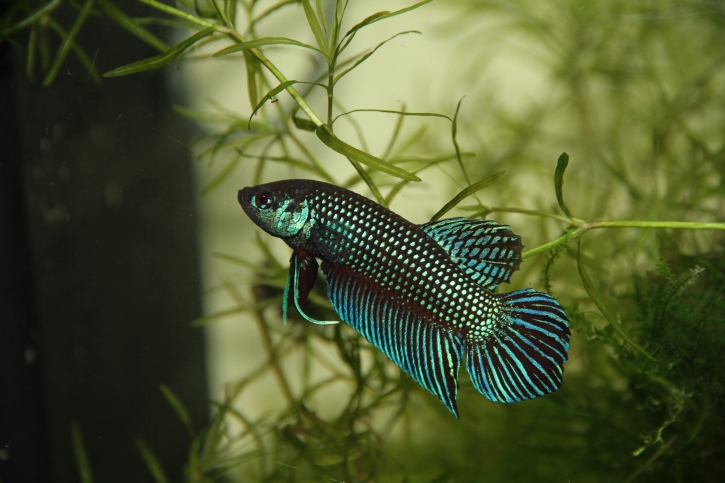

Betta fish, with their flowing fins and vibrant colors, are a staple of the aquarium hobby. But did you know there’s a whole world of wild Betta species out there? One such species, the Betta mahachaiensis, is a fascinating and increasingly rare jewel that deserves our attention.
Quick Betta Mahachaiensis Facts
Click here for my favorite betta fish care guide that simplifies betta ownership…
| Common Name | Betta mahachaiensis |
| Origin | Central Thailand (Samut Sakhon province) |
| Habitat | Brackish water environments with Nipa palm trees |
| Conservation Status | Endangered due to habitat destruction and the aquarium trade |
| Appearance | Iridescent green-blue scales with a black background |
| Temperament | Peaceful but males can be territorial |
| Tank Size | Minimum 5 gallons for a single male, 15-20 gallons for pairs |
| Water Conditions | Temperature: 72°-80°F, pH: 6-7.5 |
| Diet | Carnivorous (prefers live or frozen foods such as mosquito larvae, daphnia, bloodworms) |
| Breeding | Requires conditioned pairs and a well-prepared environment; males build bubble nests for spawning |
| Lifespan | 1-2 years or up to 5-7 years with proper care |
Wild Origins and Unique Beauty
Hailing from the wetlands of central Thailand, Betta mahachaiensis was only recently discovered and scientifically classified in 2012. They inhabit a specialized environment of brackish waters, often surrounded by Nipa palm trees. Unlike the flamboyant domesticated Betta splendens, these fish display a more subtle beauty. Their scales shimmer with iridescent greens and blues against a dark background, while their fins are shorter and less extravagant. Females are usually less colorful than males, a distinction important to know for anyone considering breeding.
A Species in Peril
Sadly, Betta mahachaiensis is facing serious threats. Habitat destruction, pollution, and over-collection for the aquarium trade are pushing them towards extinction. This is why responsible choices as aquarists are more critical than ever. If possible, seek captive-bred Betta mahachaiensis to help reduce pressure on wild populations.
Creating a Haven for Your Betta Mahachaiensis
Betta Fish Need The Right Care To Be Happy! Click Here For What You Need to Know…
Interested in bringing one of these unique fish home? Here’s what you need to create a thriving environment:
- Tank Setup: Start with a minimum tank size of 5 gallons for a single Betta, though larger is always better. Focus on a densely planted paradise with options like java fern, mosses, and anubias. Leaf litter (like Indian almond leaves) will add natural tannins and create a shaded, calming environment.
- Water Conditions: Aim for a temperature between 72°-80°F and a pH of 6-7.5. Most tap water, after proper conditioning, should be suitable. While these Bettas can tolerate some brackish conditions, there’s no need to add salt unless specifically recommended for health reasons.
- Feeding: In nature, they feast on insects and small invertebrates. Replicate this with live or frozen foods like bloodworms, mosquito larvae, and daphnia. Some individuals can be trained onto high-quality pellets or flakes.
- Tankmates: Betta mahachaiensis are generally peaceful, though males can still get territorial. Single-species tanks are safest, but with ample space and hiding places, you might try peaceful nano fish or specific invertebrates like Amano shrimp. Just be prepared to separate them if problems arise.
The Joy of Breeding
If you’re up for the challenge, breeding Betta mahachaiensis can be incredibly rewarding. Provide a well-conditioned pair with plenty of live foods, and watch as the male creates a mesmerizing bubble nest. Be diligent about water changes and feeding tiny fry to ensure their survival.
A Call for Responsible Care
Betta mahachaiensis can live for several years with proper care. By understanding their unique needs, we can enjoy this captivating species and contribute to its conservation. Let’s spread awareness and make ethical choices to ensure these stunning wild Bettas swim in our aquariums and their natural habitats for generations.
Betta Macrostoma 101: Care, Habitat, Breeding
Betta enthusiasts – prepare to be captivated! If you’re searching for a fish that combines exotic beauty with a unique behavioral twist, set your sights on Betta Macrostoma. This dazzling species, known as the Brunei Beauty or Spotfin Betta, goes beyond your typical betta fish experience. Let’s explore what sets them apart and how to create a thriving environment for them in your aquarium.
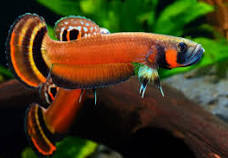

Credit: aquadiction.com
A Journey into the Wild
Click here for my favorite betta fish care guide
Picture yourself wading through the lush rainforests of Southeast Asia, specifically Brunei and Malaysia. Here, hidden within slow-moving streams, resides Betta Macrostoma. These streams are often stained dark with tannins from decaying leaves and roots, creating an acidic, sheltered environment. Dense aquatic vegetation offers a maze of hiding places. Betta Macrostoma favor warm, soft water with a pH ranging between 4.0 and 6.5. Temperatures between 72-80°F (22-27°C) mimic their natural habitat. It’s important to remember that in the wild, their cautious nature is influenced by potential predators like larger fish and aquatic insects.
A Conservation Concern
The Brunei Beauty carries a “vulnerable” classification on the IUCN Red List, a stark reminder of the environmental pressures they face. Habitat destruction is their primary threat. Once believed extinct, their thrilling rediscovery sparked renewed interest and conservation efforts. Thankfully, Brunei offers some legal protection, offering hope for the future of this unique species.
Peaceful Warriors of the Aquarium
Betta Fish Care Can Be Expensive… Click Here For What You Need to Know To Get It Right…
Ready for a surprise? Unlike the fiery Betta splendens (Siamese Fighting Fish), Betta Macrostoma are peaceful creatures. While males might occasionally stake out their territories, serious injuries are rare. This opens the door to peaceful community setups – provided you choose tankmates carefully!
A Visual Masterpiece
The Brunei Beauty earns its name! Males, reaching about 3 inches (8cm) long, are a dazzling sight. Their elongated fins explode with shimmering reds, blues, and iridescent speckles. True to their name, “macrostoma” translates to “large mouth,” a distinctive feature. Females, while smaller and less vibrantly colored, still possess an understated elegance. When competition arises or during courtship, males dramatically intensify their colors and flare their fins in a breathtaking display that has to be seen to be believed.
Caring for Your Brunei Beauty
Bringing a Betta Macrostoma home involves a commitment to replicating its wild environment. This isn’t a fish for beginners but is deeply rewarding for experienced aquarists. Let’s break down the essentials:
- The Heart of the Habitat: Start with a spacious tank, at least 15 gallons, and absolutely equip it with a tight-fitting lid (these bettas are skilled jumpers!). Mimic their rainforest origins with abundant live plants such as Java Moss, Anubias, and floating varieties to diffuse light. Driftwood branches and caves provide essential hiding spots, reducing stress and encouraging natural behaviors.
- Filtration and Lighting: Choose gentle filtration, like a sponge filter, to avoid creating strong water currents they dislike. Opt for subdued lighting, further recreating the dim conditions of their shaded streams.
- Finding the Perfect Roommates: Tankmates should be selected with utmost care. Small, peaceful species like rasboras, dwarf tetras, or certain barbs make suitable companions. Avoid any fish known for their bright colors, long fins, or nippy tendencies.
- A Feast for a King: Live foods like brine shrimp, daphnia, or bloodworms are their ideal diet but can be supplemented with high-quality frozen options over time. Offer small, frequent meals throughout the day.
- Maintaining Pristine Water: Consistent water quality is essential. Test for pH, hardness, and temperature regularly. Dedicated water changes help replicate the pristine streams they’re accustomed to.
| Category | Details |
|---|---|
| Tank Size | Minimum 20 gallons for a pair; larger for groups. |
| Tank Setup | Dense vegetation, driftwood, caves. Secure lid to prevent escapes. |
| Water Temperature | 68-77°F (20-25°C). |
| pH Level | 4.0-5.7 (soft, acidic water). |
| Water Hardness | 0-90 ppm. |
| Filter | Sponge filter recommended for gentle flow. |
| Lighting | Dim, to simulate shaded natural habitat. |
| Feeding | High-protein diet; prefers live or frozen (brine shrimp, bloodworms). Feed 1-2 times daily. |
| Tank Mates | Compatible with peaceful, small species. Avoid large, aggressive fish or fin nippers. |
| Breeding | Separate breeding tank; high-quality diet for conditioning; male mouthbroods eggs. |
| Water Changes | Bi-weekly changes of 10-20% recommended. |
| Monitoring | Regularly check water parameters; avoid abrupt changes in the environment. |
The Miracle of Mouthbrooding
Witnessing Betta Macrostoma’s breeding behavior is a true aquarist’s privilege! Unlike most betta species, males are mouthbrooders. After a mesmerizing courtship dance, the male carefully gathers the eggs in his mouth and incubates them for approximately two weeks. Here’s what you need for success:
- Setting the Stage: A dedicated breeding tank, smaller in size but mirroring the water conditions of the main setup, is optimal.
- Encouraging Breeding: A nutritious, varied diet encourages breeding behavior.
- The Dance & After: The spawning ritual is a captivating sight, and the male’s attentive care of the eggs is extraordinary. Once hatched, the tiny fry will require specialized care for the first few weeks, including very small foods like infusoria or microworms.
A Treasure Worth Protecting
The Brunei Beauty, Betta Macrostoma, adds a special dimension to aquariums worldwide. Its unique appearance, fascinating behavior, and conservation story are a reminder of nature’s wonder.



